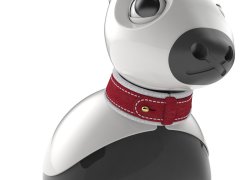Install dependencies
To use some features, and depending on what is already installed on your system, you may have to add some additional packages to your system.
Run the following command to make sure these are installed, now.
In addition, if you want to use the multimedia elements (client_gui and client_stream), you'll need these also.
python3- prefix, accordingly.Install MDK
First, download the latest version of the MDK[1].
Next, unzip the MDK to a location of your choice.
Finally, perform the following commands to install the MDK.
~/mdk-190211—you should replace this with the actual path you have chosen.
If you are running on 32-bit Debian, here and throughout the documentation, replace the token deb64 with the token deb32, wherever it appears.[1] If your robot does not have the latest MDK installed, you can either install a matching version on your workstation, or update the software on your robot to the latest MDK by following this procedure.
Test MDK
Open a new bash terminal, and you should see text similar to that shown below.
Gotchas
Please check the FAQ section "MDK" for a list of common MDK installation gotchas if you find you have immediate problems.
What did that do?
The install script performs the following tasks.
- Add symbolic link
- A link is placed at
~/mdkthat points at the newly-installed MDK. - Initialise automatically
- A command is added to the bottom of
~/.bashrcto runsetup.bashand initialise the MDK whenever you start a new bash terminal (you will see the output above when you do). - Configure network automatically
- The network address of the local machine is recovered automatically when
setup.bashis run, and is indicated as "Local network address" in the output above. - Create configuration directory
- A configuration directory is created at
~/.miro2and default configuration files are written there. - Build catkin workspace
- If required, the catkin workspace at
~/mdk/catkin_wsis built.
Configuration
If you are happy with all of the above, particularly that "Local network address" is correct, then please proceed to Install ROS.
If you want to change any of these defaults, read the page Configure MDK for advice on doing so.

